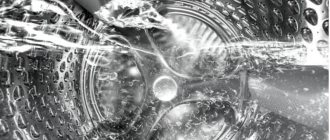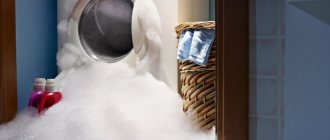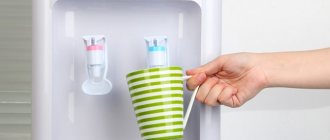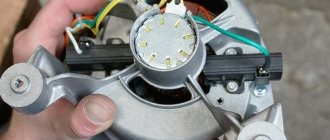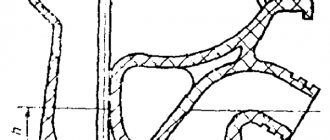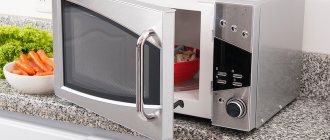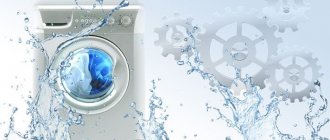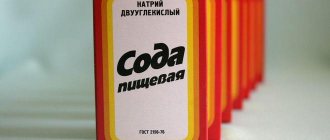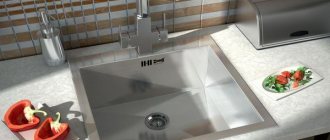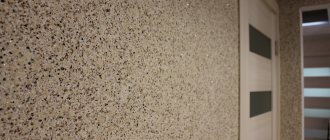From this article you will learn:
- What is the working principle of a water cooler?
- What types of coolers are there that cool water?
- Why doesn't the cooler cool the water?
- How to troubleshoot problems with water cooling in a cooler
- In what cases is it better to contact specialists to repair a cooler that does not cool the water?
A floor or tabletop cooling water cooler is a very convenient thing in the office for both employees and visitors. After-sales service ensures uninterrupted and long-term operation of the device. However, there are situations when repairs at a service center are not possible for some reason, and the cooler has stopped cooling the water. Malfunctions are most often caused by careless transportation of the dispenser, its improper installation or operation. In order to properly solve the problem and figure out why the cooler does not cool the water, you need to know the possible causes of the breakdown and how to eliminate them.
Working principle of a water cooler
A cooler is a device through which employees and visitors to the offices of public and private companies can easily be provided with cold or hot water. The design consists of a dispenser and a container for drinking water in the form of a plastic bottle with a volume of 19-30 liters, as well as a check valve and a connecting pipe.
The drinking water tank is connected to the dispenser. The dispenser's distribution system consists of two containers that store hot and cold water. The cold water tank is filled first. From it, the liquid is supplied through a connecting pipe to the boiler and heated. The two containers are separated by a check valve, which balances the pressure of the system and prevents mixing of water flows.
So, the action of a heating and cooling cooler begins with the entry of a dosed amount of water into the storage tank for its subsequent cooling or heating. Power comes from a 220 V electrical network. Coolers are equipped with sensors to control water heating and cooling. Thanks to them, when the desired temperature is reached, the operation process stops and the device goes into a standby state without consuming electrical energy until the temperature changes. This mode is called “heating - shutdown”.
The rated power depends on the cooler model. Almost all of these devices are configured to heat water to +95-98 C and cool it to +4 C.
Improved models of coolers - purifiers are connected to the water supply, filtering and cooling or heating running water. Filtration is carried out by mechanical or chemical purification, providing 96-99% pure water.
Manufacturers of flow-through devices use the most highly effective achievements in the field of liquid purification used in medicine, pharmaceuticals, and perfumery. A carbon filter ensures that water gets rid of unpleasant odors and harmful impurities, purifies it and improves its taste.
The main problems encountered in the operation of the cooler
We can highlight the main problems that cooler users face.
The device does not heat water
It happens that the reason for such a malfunction is that the device is not connected to the power supply or the heating button is not turned on. If, after turning on the button, the heating indicator still does not light up, you should check the outlet itself. To do this, you need to connect any other device to it, or try connecting the cooler to a different outlet. Perhaps the reason is not in the outlet, but in the power plug of the device itself.
Another reason may be that the cooler simply does not have time to heat a sufficient amount of water, and it has recently been used in large quantities. In the instructions you can see how much water a particular device can heat and over what period of time.
If the heating button is turned on and the socket is working, but the water also does not heat up, you will need to disassemble the equipment.
This must be done as follows:
- Remove the panel located on the rear side;
- Check the fuse for functionality;
- Replace the fuse if faulty.
If this procedure does not bring results, you will have to contact a service center, since the breakdown is more serious and you cannot fix it yourself.
No water comes from the tap
This is not a malfunction, but rather a small problem that may arise due to the label remaining on the neck when installing the bottle. Another reason is the appearance of an air lock in the bottle, which interferes with operation.
To eliminate it, you need to rock the bottle with your hands in different directions until air bubbles begin to form in it.
Water regularly leaks and drips from the faucet
The reason may be a crack in the bottle itself. In this case, it is necessary to replace it, and the problem will be solved. If water continues to regularly drip from the faucet, you should contact a service center to have the problem repaired.
Cooler doesn't cool
First of all, you should check that the cooling button is turned on and that the socket is working properly. The reason for this may also be the technical capabilities of the device. Most devices require at least an hour to cool a liter of water.
Other malfunctions are quite rare and if they occur, you should contact a service center.
ATTENTION! You should not disassemble the cooler yourself while it is under warranty.
Types of coolers that cool water
Modern manufacturers of heating and cooling water coolers are pleased to offer consumers a wide range of different models of various shapes, designs, sizes, functionality, design options, with or without additional options. Cooling drinking water is one of the most basic functions of any standard cooler, especially important during hot periods. There are two types of cooling - electronic and compressor. Let's look at each of them and take a closer look at all the advantages and disadvantages.
Electronic water cooler
The operation of electronic cooling systems for water coolers is based on the Peltier principle. The name of this principle was given by Jean Peltier, a French physicist who noticed and substantiated in 1834 the cooling of the junction of conductors when an electric current is passed through them. Russian academician A.F. Ioffe continued his research and synthesized a special semiconductor alloy, which made it possible to expand the application of the discovered effect and begin mass production of electrically cooled devices.
The main operating element in coolers with electronic water cooling systems is a semiconductor thermoelectric module, made up of several thermocouples connected together, placed between the plates. Under the influence of electric current, one of the plates heats up and the other cools, which creates the effect of a temperature difference.
Coolers with electronic water cooling have undeniable advantages:
- affordable price;
- simplicity of design;
- ease of transportation;
- environmental friendliness;
- lack of freon.
But there are also significant drawbacks. One of them is the low level of performance of electronic coolers: heating or cooling water no more than 5-6 glasses per hour. This is a low indicator for using a cooler in a crowded place. Another disadvantage is the ability to cool water only to 12 C, which is not enough for very hot weather.
All this suggests that it is not advisable to install coolers with electronic water cooling in a room with elevated air temperatures, because the water will take a very long time to cool. Unventilated or dusty rooms are also not suitable for installing coolers in them. Dust and dirt can clog the fan, and the cooling module of the equipment will completely fail.
In general, coolers with an electronic type of cooling are characterized as affordable equipment, the use of which is advisable with a minimum need for cold water. For offices of companies with a large number of employees and visitors, such equipment is not entirely convenient.
Prevention
For prevention, you can regularly perform mechanical cleaning of the device. To do this you will need to disassemble it.
You need to carry out this process in the following way:
- Unscrew the screws on the back wall of the cooler using a screwdriver;
- Remove the heating tank and all pipes;
- Remove the plug and drain the cold water that is in the cooling system;
- Remove power wires, temperature sensors and ground wires;
- Clean all parts from dust and dirt and begin assembly.
In order to avoid damage to the cooler, it is recommended to turn off the device if there is no water in it and install it at a distance of at least 10 cm from the walls.
Source
Why doesn't the cooler cool the water?
Suppose that, completely unexpectedly, the cooler does not cool the water or stops working completely. The reasons can be very different. From trivial and easily fixed to complex and requiring a visit to a service center. Study the list of possible problems below to understand why the cooler is not cooling the water and how serious the damage to your equipment is.
1. The cooler does not cool water well in the following cases:
- High water consumption. The dispenser does not have time to cool the water to the required temperature. Based on the type of cooling of your cooler, try to give the device time (on average 15 minutes) to cool the water.
- The water thermostat is incorrectly set. A thermostat set to the minimum level can also cause poor water cooling. Change the current settings.
- Poor ventilation conditions. The equipment housing must have at least 10 cm of air space around it and not come into contact with walls. Lack of optimal ventilation conditions can cause poor cooling of the water in the dispenser.
- If the cooler does not cool the water, the reason may lie in overheating of the cooling elements. To eliminate this cause of poor cooling of water in the cooler, you simply need to disconnect the equipment from the power supply and leave it turned off for half an hour.
2. Cooling does not occur at all in the following cases:
- Electrical problems. First of all, look at the corresponding indicator on the cooler panel and make sure that the equipment is connected to the mains and the voltage is at the required level. Lack of voltage, problems with the socket or disconnection of the dispenser from the network can cause a failure in water cooling.
- Incorrect position of the cooling switch. Read the instructions that came with the cooler. Determine the correct position of the toggle switch that regulates water cooling. Typically, such a toggle switch is located on the rear panel of the device.
- Fan or Peltier element malfunction. Long-term use of a cooler equipped with electronic water cooling elements in a poorly ventilated area can lead to fan malfunctions or overheating of the Peltier element. If the cooler does not cool the water, but the fan is working, then you need to contact service center specialists to find and replace damaged parts.
- Compressor failure. Such problems are typical only for coolers with compressor water cooling and require replacement or repair of the compressor itself. Careless handling of the equipment, in particular the radiator grille, can lead to microcracks and freon leakage. Service center employees can easily identify and seal the leak, then pump in the required amount of refrigerant.
Now you know what to do if the cooler stops cooling the water. If there is a complete lack of water cooling, first try to make sure that the reason is not due to improper operation or some kind of accident and cannot be eliminated by you yourself. A breakdown of a fan, Peltier element or compressor requires contacting specialists and replacing some parts. In such cases, if the cooler does not cool the water, you should not do repairs yourself, so as not to completely damage the device. Complex problems should be resolved exclusively by professionals.
The main reasons for water cooler failure
A cooler is a symbiosis of a refrigerator and a kettle. It contains heating elements for heating water and cooling parts for supplying cold liquid. Experts say that 95% of cooler breakdowns are caused by improper operation of the device. And only in rare cases the cause of the malfunction is a manufacturing defect.
The cause of the breakdown may be contamination of the device, failure of the cooling equipment or burnout of the heating elements.
Experts identify a number of reasons that most often disable the device:
- scale on the heating element;
- inappropriate use of the device;
- foreign objects inside the device;
- violation of transportation and installation requirements;
- careless handling of taps;
- failure to comply with the cooler disinfection regime.
Our technicians diagnose the device and, based on its results, fix problems on site or in a service center if parts and components of the unit need to be replaced.
Where to buy a drinking water cooler
engages in supplies to Russia of coolers, pumps and related equipment designed for bottling water from bottles of various sizes. All equipment is supplied under the “ECOCENTER” brand.
We provide the best price-quality ratio of equipment, and also offer our partners excellent service and flexible terms of cooperation.
You can see the attractiveness of collaboration by comparing our prices with similar equipment from other suppliers.
All our equipment meets the standards established in Russia and has quality certificates. We deliver dispensers to our customers, as well as all the necessary spare parts and components in the shortest possible time.
General provisions
Before looking at the taps that are installed on the cooler, let's pay a little attention to the device itself:
Structure of a floor cooler
| Designation in the figure | Name |
| 1 | Bottle installation location |
| 2 | Green cooling indicator |
| 3 | Red heating indicator |
| 4 | Yellow power indicator |
| 5 | Cold water tap |
| 6 | Hot water tap |
| 7 | Collection container for drops |
| 8 | Cooling system |
| 9 | Cooling thermostat |
| 10 | Green cooling switch |
| 11 | Red heating switch |
| 12 | Cooling radiator |
| 13 | Network connection wire |
| 14 | Drain valve |
| 15 | Grounding |
As you can see from the given structure of the water dispenser, the faucets are indeed precisely the part with which a person who decides to drink from the cooler comes into contact. Consequently, the requirements for it must be special.
What are the features of self-repair of a cooler?
There can be many reasons for the malfunction. There are often problems that can be eliminated quite quickly. Let's look into them.
The device is dirty
If dirt has accumulated in the cooler, it will stop working and will need to be cleaned .
- First, the device is disconnected from the power supply and the water bottle is removed.
- The surface of the cooler must be thoroughly rinsed using the usual detergents used to wash dishes. The work must be done carefully, especially in the place where the needle is located, onto which the liquid container is placed.
- Then they take the pallet. It is thoroughly washed and rinsed.
- All parts of the dispenser are wiped dry with a soft cloth.
Then all elements of the device are returned to their places. Fill the bottle with water and drain a little through the tap. This is necessary to flush the tap as there may be some detergent left in it.
The device does not heat water
Most often the cause of the malfunction is the following:
- The device is not connected to the electrical network.
- You didn’t click on the “turn on” button, which is located on the panel.
After performing the necessary operations, the indicator still does not light, check the outlet itself. This is easy to do: take any electrical appliance and connect it. If it does not start working, the reason is that the outlet itself is faulty: either replace it or plug the cooler into another outlet.
If the cooler does not start working in it, you will have to disassemble the equipment:
- We remove the panel located on the rear panel and check the functionality of the fuse. If necessary, insert a new element.
- Again nothing happened, which means the reason is the heating element. In this case, the malfunction can only be repaired at a service center.
There is no water in the cooler taps
There are only two reasons for this malfunction:
- When installing the bottle, they forgot to remove the label.
- During operation, a plug of air appears in the container, preventing the cooler from working efficiently. Eliminating the inoperative state of the installation is simple: pump the dispenser until air bubbles appear in the water container itself.
If owners operate the cooler correctly and follow the instructions, then, as a rule, such misunderstandings do not arise. In addition, you need to check the operation of the taps every time the water in the bottle is changed.
Water flows out on its own or the faucet is leaking
If you notice that water flows out of the dispenser spontaneously , check the safety of the container. Perhaps microcracks have appeared on it. You can eliminate this error yourself. To do this, remove the damaged bottle and replace it with a new plastic container.
If liquid is constantly leaking, dripping from the faucet, then you cannot solve the problem yourself: only specialists from the service center can remove this malfunction.
Water is not cooling fast enough
Electronic coolers often suffer from this disease. This is due to the design of the equipment and technical capabilities. Cooling of one liter takes place in an hour, while the water temperature can be fifteen degrees lower than the surrounding air.
The coolers do not have great performance capabilities. These devices are not high-performance devices . If you need colder water, then the cooler is installed in a cool room where the sun does not reach.
Why water doesn't flow in the cooler: hot and cold
There can be several reasons for the lack of flow. This applies to both systems. Hot water does not flow if:
- the device where it should be located is empty;
- the device is in shutdown mode;
- the device does not operate as a result of the locking system;
- There is a malfunction in the heating element itself.
In addition to finding out the reasons why hot water does not flow from the cooler, we are often faced with a similar question regarding cold supply.
There are a number of reasons given for the lack of cold drinking water. Among them there are conditions similar to the malfunction of the hot feed system
- the tank that should be filled with water is empty;
- cold water does not flow because it is frozen in the tap;
- the compressor broke down;
- There is no refrigerant in the system and it needs to be changed
